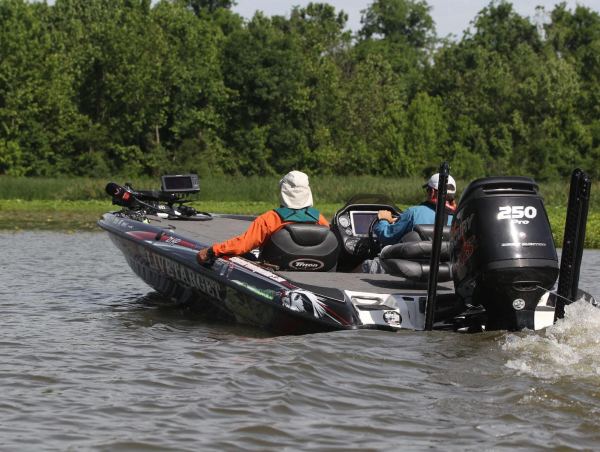|
“Don’t assume a familiar area is free of danger simply because you’ve safely navigated it before,” AGFC Black Bass Program Coordinator Jeremy Risley said. “Floating debris is difficult to see first thing in the morning and as the sun sets in the evening. As days grow hotter and night-fishing becomes more prevalent, extra caution becomes even more important.”
Boaters should also know how much water their vessel needs to operate safely and avoid venturing into areas that are too shallow. Allow for extra clearance, remembering that you may not be able to see submerged debris. Pay close attention to your depth finder, but remember that it only reads where you’re at, not what is just ahead. When in doubt, opt for slow and steady, even using the trolling motor if you know you’re in an area likely to be riddled with underwater obstacles.
Wearing a properly fitting life jacket is always encouraged, but even more so when navigating unfamiliar high water. Strong currents, floating debris, and unexpected impacts can cause boaters to be thrown into the water, and a life jacket can be the difference between an embarrassing plunge and a tragic situation. By law, all boats in Arkansas must have a properly fitting, wearable U.S. Coast Guard-approved life jacket readily accessible for every person on board. Children 12 and under must wear their U.S. Coast Guard-approved life jacket the entire time they are on board any vessel unless such occupants are within the enclosed area of a houseboat or cruiser, or within the area enclosed by railings of a houseboat, party barge, or cruiser, and the vessel is not underway.
High water amplifies the need for focused, responsible boating. Be mindful of these new challenges and you can unlock the key to some fantastic fishing on Arkansas’s beautiful lakes and reservoirs this summer.
- - Sarah Baxter, AGFC Fisheries Communications Coordinator
|
